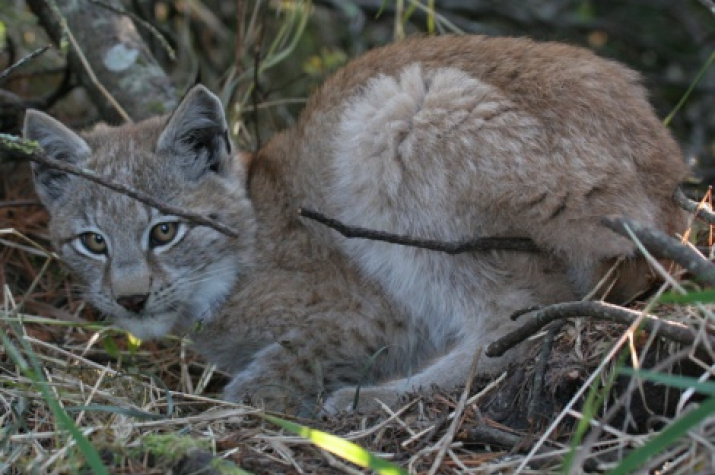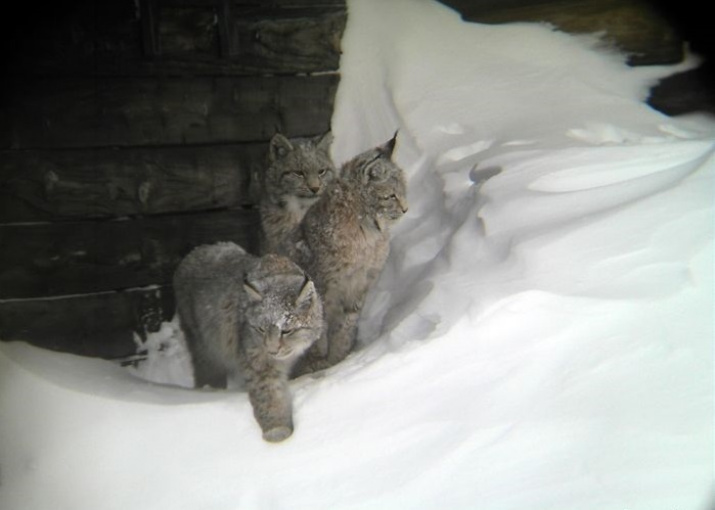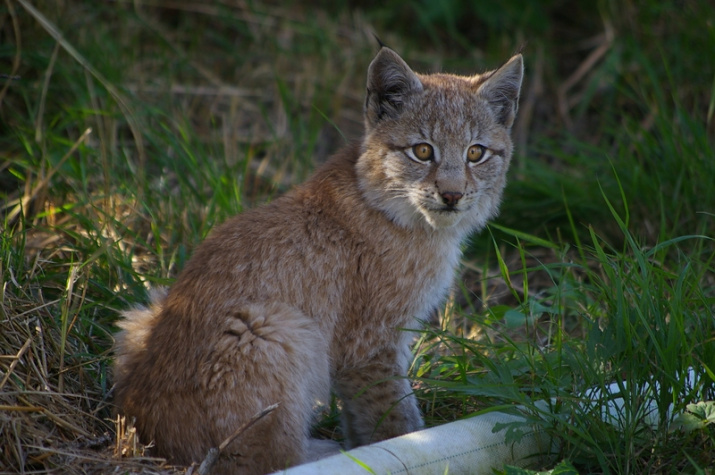An orphaned lynx cub was found at cordon Istok in Kronotsky Reserve in Kamchatka. Scientists hope that the skills acquired from the mother will let the cub survive in the wild.
The cub was found around lake Kronotskoe a few days ago. State inspector of the Reserve Konstantine Lukashevsky was first who saw it.
"In the evening I went out of the house and saw the beast right next to the porch. Startled, I was scared. You don’t meet a wild cat every day. As far as I know, bobcats lead very secretive life, there are few bobcats in the reserve, and in general on the Kamchatka Peninsula," - said Konstantine.
"Obviously the cub lives in a thicket of cedar near the cordon. We often see it there," - said Lyudmila Anisimova, Researcher of VNIRO, member of the expedition to study the fish fauna of lake Kronotskoe.
Lynx cubs are born in late May - early June, the baby is only three and a half months old. It is not bigger than a domestic cat.
«A lynx cub who was left without a mother, has a chance to survive in the wild. It is important not to pick it up in your arms, not to bring it in the house - said Anna Yachmennikova, a researcher of A. N. Severtsov Institute of Ecology and Evolution (IEE RAS). -Its mother should have already taught it by this age how and from whom to hide. Surely the cub saw how she hunted, so it has the idea of this, and with age will also begin to hunt".
According to Anna Yachmennikova who studies canine and feline in Kronotsky Reserve now the most important thing for the cub is to have a good fat reserves to keep warm before the winter starts. This requires a high-calorie feed. It is also important for a kitten to grow.
"The basis of East Siberian trots’ prey are hares, they also hunt partridges, attack bighorn sheep and wild reindeer. Given the peculiarity of the region, the diet of trots who live in Kamchatka also includes salmon. The kitten will be able to fish on the spawning of small rivers flowing into lake Kronotskoye, "- said Alexander Nikanorov consultant at the scientific department of Kronotsky Reserve.
It is the first time in the history of scientific observation in the reserve when the lynx cub comes to human habitation in the area of Kronotskoe lake. Most often you can observe the lynx in the Geyser Valley closer to winter, for example in December 2011 the mother brought three kittens to the inspector's lodge.



















